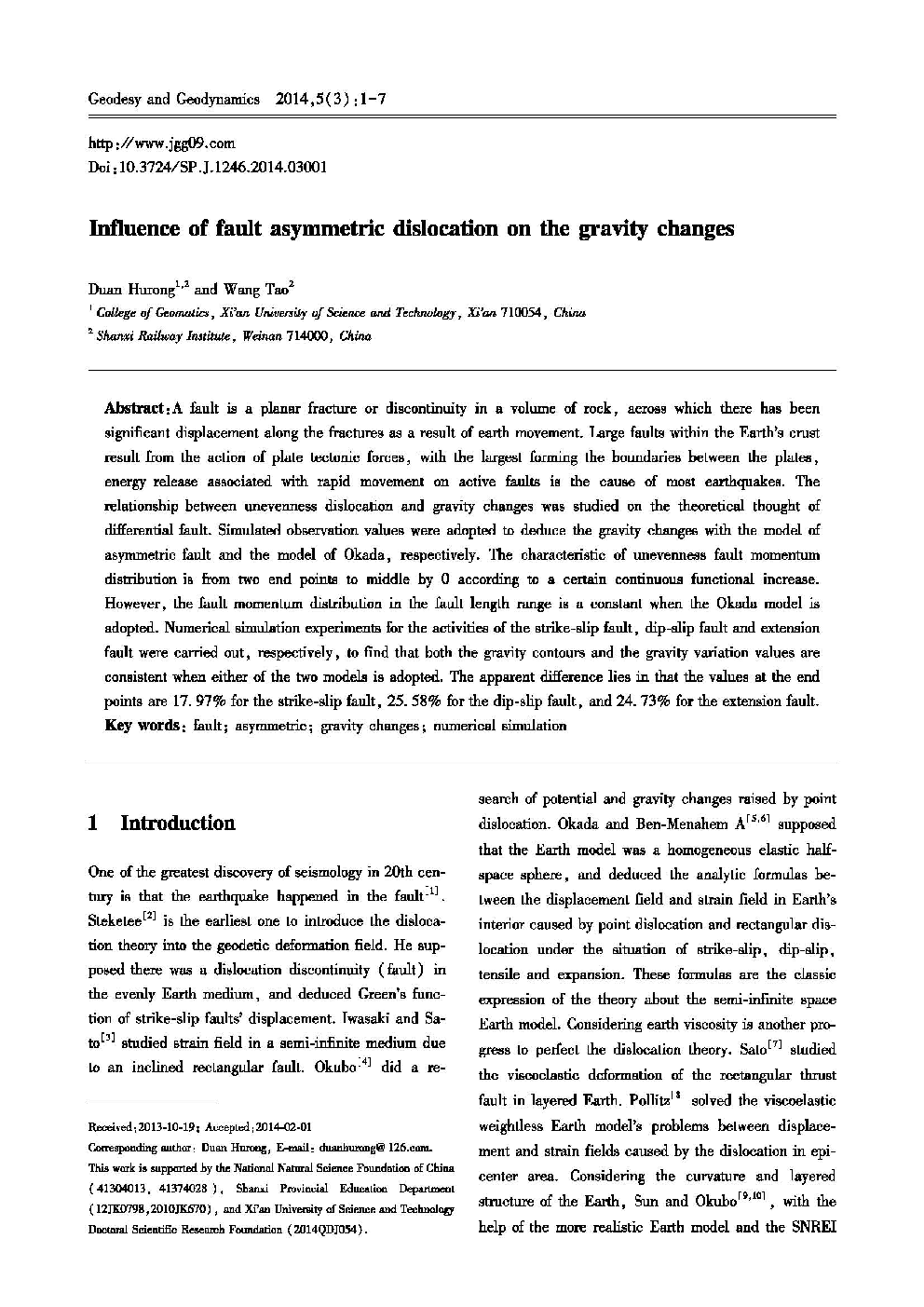| Article ID | Journal | Published Year | Pages | File Type |
|---|---|---|---|---|
| 4683678 | Geodesy and Geodynamics | 2014 | 7 Pages |
:A fault is a planar fracture or discontinuity in a volume of rock, across which there has been significant displacement along the fractures as a result of earth movement. Large faults within the Earth’s crust result from the action of plate tectonic forces, with the largest forming the boundaries between the plates, energy release associated with rapid movement on active faults is the cause of most earthquakes. The relationship between unevenness dislocation and gravity changes was studied on the theoretical thought of differential fault. Simulated observation values were adopted to deduce the gravity changes with the model of asymmetric fault and the model of Okada, respectively. The characteristic of unevennes fault momentum distribution is from two end points to middle by 0 according to a certain continuous functional increase. However, the fault momentum distribution in the fault length range is a constant when the Okada model is adopted. Numerical simulation experiments for the activities of the strike-slip fault, dip-slip fault and extension fault were carried out, respectively, to find that both the gravity contours and the gravity variation values are consistent when either of the two models is adopted. The apparent difference lies in that the values at the end points are 17. 97% for the strike-slip fault, 25. 58% for the dip-slip) fault, and 24. 73% for the extension fault.
